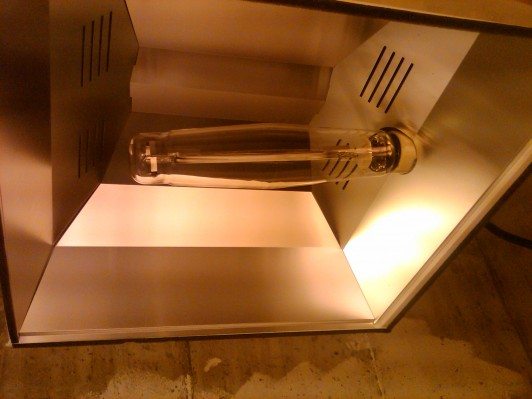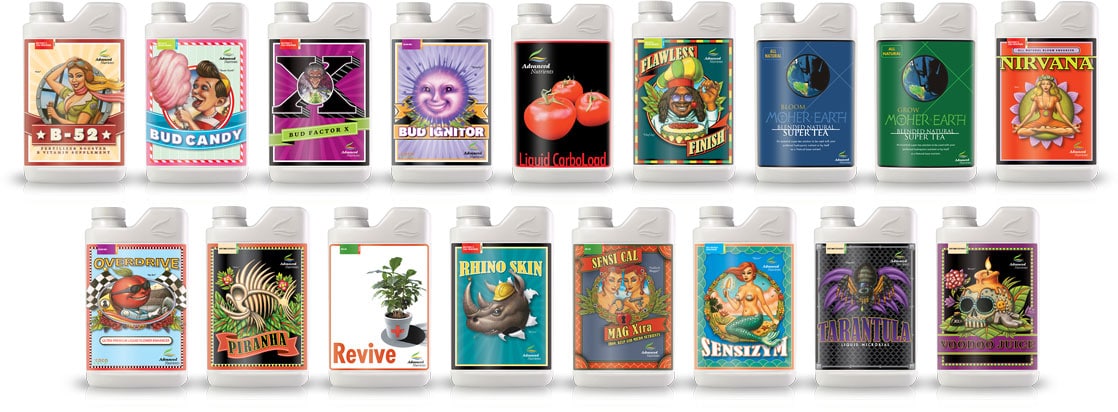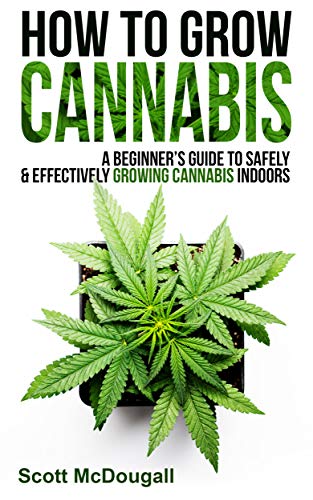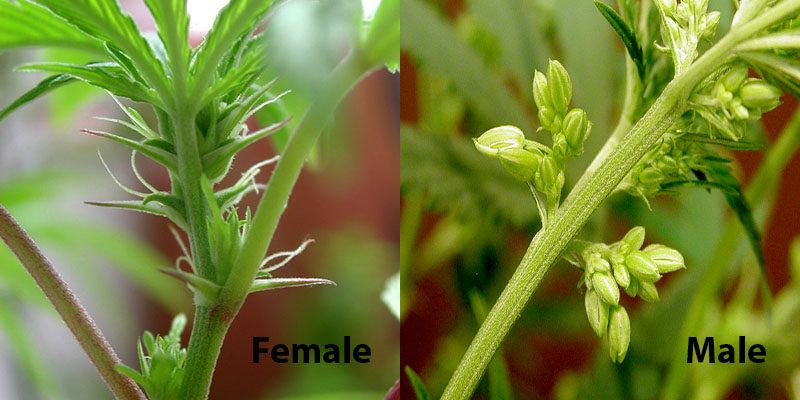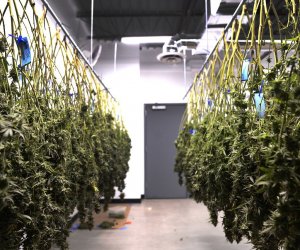Indoor marijuana growing requires the use of Grow Lightsdesigned specifically for indoor plant growth to replicate the lighting that the sun provides for outdoor plants. There are many different grow lights available, all of them using different spectrums to produce different growth in marijuana plants.
How Many Grow Lights are needed to Grow Medical Indoor Marijuana
The minimum amount of light required by marijuana plants is around 3000 lumens per square foot. However, it’s not 100% accurate, since although you may have a 10,000 lumen light, the amount of light that reaches the plant varies with the distance between the light and plants, and reflectivity of the grow box. The ideal amount is somewhere around 7000-10,000 lumens/sqft, and as long as the plants do not burn, as much light can be used as you want. (*note, the sun produces about 10,000 lumens/sqft, on a sunny summer day).
Determining lumens for your grow area:
Determine the square footage of your area (example in a 4 foot by 4 foot area, there is 16 square feet)
If you have a 1000 watt High Pressure Sodium Grow Light, that produces (approx.) 107,000 lumens.
Divide this by 16 (your square footage) 107,000 / 16 = 6687 lumens per square foot.
So just divide the total amount of Lumens, by the total amount of Sq ft, and thats your lumens per square foot.
How far away from my plants do the grow lights go
The marijuana grow lights in your indoor grow room should be as close as possible to the plants without burning them. There is no such thing as too much, unless there is sufficient heat to dry out and burn the leaves. A good rule is to put your hand under the grow light, if its too hot for your hand, chances are that the plants will be too, so move the light up until your hand feels more comfortable. For seedlings and clones, I keep my Fluorescent shop lights a little further away from the light, because they are very susceptible to burning and drying out, at these stages. Efficiency is very important when choosing a type of light. The wattage is not the most important thing, as you can see below, different types of grow lights produce different amounts of lumens per watt. A 300 watt incandescent will produce about 5100 lumens. While a 300 watt Metal Halide (just an example, they do not come in 300 watts), will produce 27,000 lumens. Obviously far more efficient for growing, while still using the same amount of electricity.
Approximate light production:
Incandescents: 17 lumens/watt
Mercury vapor: 45-50 lumens/watt
Fluorescents: 60-70 lumens/watt
Metal halide: 90 lumens/watt
High pressure sodium: 107 lumens/watt
Incandescent Grow Lights
Incandescents are the most popular type of lights in the world. They may come advertised as incandescent, tungsten, quartz, halogen, or simply standard. The important thing about incandescents is this: they suck.
There are some incandescents which are sold as ‘grow lights.’ They usually have a blue coating and usually come in 60W and 120W sizes. While they may seem like a good choice to new growers, they are next to useless; they produce some light at a usable spectrum, but only have about a 5% efficiency and generate more heat than usable light. Most of us have these in our homes right now. Don’t use them for growing, instead opt for a Compact Fluorescent as a cheaper but more efficient alternative.
Fluorescent lighting

Fluorescent Grow Lights are a lot more useful than incandescents. Their efficient enough, and cheaper than HID lights. Compact fluorescent tubes are popular with growers because of their good output to size ratio. Compared to standard 4′ tubes, compact fluorescent bulbs are smaller, and more can fit into a given area. Fluorescents are good for small cannabis grows on a tight budget, and for novice indoor marijuana growers, since they do not require any special sort of wiring or understanding of the necessary bulbs for a given fixture, and are very widely available. Fluorescent grow lights come in many different Kelvin ratings; often the spectrums are labeled on packaging as being ‘cool white’ or ‘warm white.’ Cool white is more blue, and is good for the vegetative stages of growth, and warm white light is more orange or reddish, and is best for the flowering stage.
High Intensity Discharge (HID) Grow Lights
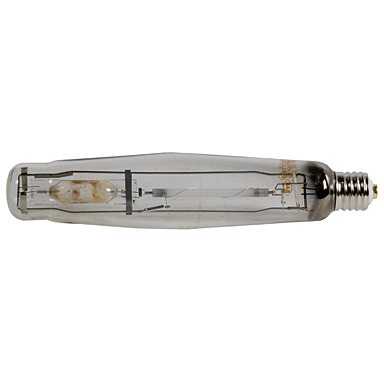
Mercury Vapor (MV) Lighting
Mercury vapor lights are not the most efficient light for growing. They are very bright, and relatively cheap. They do emit light at the wavelengths necessary to support your plants growth, but not nearly as good as a MH or Hps light. Much of the light emitted by MV lights is bluish-white. Street lighting is what most MV lighting is used for.
Metal Halide (MH) Lighting
Metal halide lighting systems are optimal for use in the vegetative phase of growing. They emit mostly blue light, which encourages vigorous growth of foliage. They are very efficient, but can get rather expensive to start with; fluorescents may seem more appealing because of their lower price, and they are not much different when compared on a lumen-to-lumen cost level. These lights can be used through-out the grow, but will most likely result in light, fluffy buds.
High Pressure Sodium (HPS) Lighting
High pressure sodium lights emit mostly orange, yellow, and red spectrum light, which is perfect for the flowering stage of the plants growth. They are (in my opinion) the most efficient type of light available for any application. HPS lights can be used through-out the entire grow. They produce more dense and usually larger buds than any other light.
HPS lights are generally a little more expensive than MH systems of similar wattage. They are more commonly used by experienced growers because of their ability to produce tighter buds, higher lumen-output-per-watt, and will produce from start to finish.
Fluorescent Lights
A fluorescent light is made up of a glass tube coated with phosphor, which is filled with a mixture of gases. When electrical current is applied, it “excites” the gases, causing the tube to glow brightly. ie: to “fluores”. The tubing is coated with phosphor, which will determine the color of the bulb. There is a wide variety of lengths from 6 to 96 inch, the most widely used is a 48 inch fixture. Fluorescents come in a wide range of watts any where from 4 to 214 watts that I have found. Fluorescent tubes are rated by hours, these hours vary by the manufacture, the most common rated hours are from 6000-22000 hrs.
What are lumens?
Lumens are the unit of measure that state the amount of light output produced by a light source. The higher the lumens, the greater the light output. The standard fluorescent tube should produce at least (3000-3300) lumens.
How can I optimize the light output for indoor marijuana grow?
You can help reflect the light out of each tube, by using metal foil tape as a reflector, attached directly to the tube. For more info on lighting and different lights please visit our Grow Lights section.

